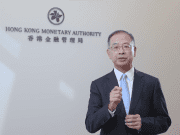8 Reasons Why You Can Construct a Portfolio Wrongly
Does portfolio construction come first or investment strategy takes priority? Perhaps you might vote in favour of investment strategy since investing in the right trends is more important than choosing the portfolio details such as:
- Should you allocate more in blue-chip stocks or mid-sized capitalization?
- Should you allocate more in investment grade or junk debts?
- Should you go for Price / Earnings Ratio of less than 12 or 11?
- and many others
But what if the investment direction you had set forth, creates difficulty in portfolio construction and execution?
- Unable to invest / withdraw due to restrictions, regulations and capital controls
- Unable to mark-to-market prices live, daily, or other frequencies
- Unable to sell the investments with efficient market pricing
- and many more
Portfolio construction is a complex science and mathematics. Many fund managers and portfolio managers quickly discover in a few years on their role, they had on hindsight, constructed their original portfolio wrongly.
Premium Content: Can you Turnaround a Portfolio You Had Constructed Wrongly (Only available to CA Select Members)
We look at 7 possibilities why you could construct a portfolio wrongly:
No. 1 Execution Problems on Portfolio Construction

The list of execution problems from a great portfolio idea is tremendous.
- Insufficient allocated cash for redemptions
- Too much cash allocated for redemptions which affect performance
- Unable to invest / withdraw due to restrictions, regulations and capital controls
- Unable to mark-to-market prices live, daily, or other frequencies
- Unable to sell the investments with efficient market pricing
Perhaps you might think the portfolio is not constructed wrongly, it just faces execution issues. A portfolio solution that doesn’t work, isn’t a solution. With investments, the opportunity cost is the cost of lost returns.
- 8 Reasons Why Building a Portfolio is Tough in Asia
- 11 Interesting Strategies to Advice Clients
- Most Popular Investment Theories Clients Ask Wealth Managers
No. 2 Internal Pressure and Market Pressure

It is stressful to decide on portfolio allocation and construction, especially if it is your first management of portfolio ranging from $50 Million or $500 Million. Having to make it right and make it count only means:
- You play it safe to gradually grow your reputation
- You take big bets and make a name
- You play it in-between
- You apply methodologies and complex science to reduce reliance on your personal calls
All these also meant you know the portfolio is not your ideal portfolio. And when performance starts lagging, you always wondered if you should had relied on your original calls instead of meeting all the internal pressure and market pressure.
No. 3 Clients’ Preferred Portfolio Allocation

With all the complex science of portfolio allocation, best-in-class selection process, portfolio constructions are horribly wrong when clients start affecting the allocation. They often make their preference for what is popular, out in the news, and random logic that sounds logical. They start removing recommendations (not that your recommendations are better), and with the new portfolio looking 30% different from the original portfolio allocation.
What does 30% means? If the portfolio is worth $1 Million and their allocated 30% declines about 20% and your allocated 70% remains …. the same, the portfolio returns will look like this:
| $1 Million Portfolio | Price | Value | Returns |
| $700,000 (Your Selection) | $1.00 | $700,000 | 0% |
| $300,000 (Their Selection) | $0.80 | $240,000 | -20% |
| $940,000 | -6% |
The portfolio returns is -6%. For the next 3 years, if it doesn’t go horribly wrong, should the investment allocation remain? Is the portfolio allocation a consensus approach or a carefully crafted portfolio which meet the needs of the investors?
No. 4 Portfolio Adhering to Regulatory Process

Regulations often require financial institutions to have a documented investment and risk management process. Overtime, most financial institutions adopt third-party methodology and processes to provide an independent oversight to comply and share responsibilities to meet regulatory requirements.
This means an increasingly homogenous approach to a portfolio construction process. Almost all financial institutions adopt portfolio allocation with a 3, 5, 6, 8 or 10 portfolio allocation matrix with the primary foundation based on:
| Portfolio Approach | Equities | Bonds |
| Conservative | 10% | 90% |
| Moderate | 30% | 70% |
| Balanced | 50% | 50% |
| Growth | 70% | 30% |
| Aggressive | 90% | 10% |
No. 5 Applying the Same Methodology

If you go to the same school, you probably learn the same things. How many of your peers, fund managers, investment managers, investment advisors use security analysis, fundamental analysis and technical analysis to construct the portfolio?
- Would the portfolio constructed be different or the same?
- Would the expected performance be different or the same?
- Would the final performance in 3, 5 or 10 years deviate much from another?
- Do you make reference to other portfolios, and make adjustment before you execute your portfolio allocation?
No. 6 Flawed in-house Portfolio Approach

Managing the portfolio does not mean you have a free-realm to invest. You are often adhering to internal guidelines and best practices. And in selecting the underlying assets or securities, you are limited by the products and solutions within your financial institution:
- Can you access most global securities or exchange?
- Do you have access to index, Exchange Traded Funds (ETFs), Funds, Funds of Funds, instead of constructing a portfolio?
- Are you able to access derivatives for risk management or for market opportunities?
- Do you have access to competitive pricing?
- Do you have to meet unstated obligations of supporting related business partners?
- Do you have to invest because there is an influx of cash / funds?
- Do you have to think about realising returns to project a better performance or for reputation purposes?
No. 7 Would News Impact Your Portfolio?

If a country is facing a tremendous economic and political crisis, would you initiate all redemptions, raise more capital for more investments or stay on the defensive? Or are you the market-maker or the hedge fund manager awaiting to make the once-in-a-century move?
Would constant news affect how you affect your portfolio construction and investment strategy.
No. 8 Why Are You Able to Buy Stocks and Foreign Exchange Everyday?
Have you ever wondered why you are able to buy stocks and foreign exchange easily in the financial market?
The answer is easy – someone is selling today. As you brilliantly construct a portfolio allocation and price entry level, someone else, would had used the same methodology and had constructed the same portfolio some time ago, and determined the price today, is worth letting go. That is some indication to you having constructed your portfolio wrongly.
” One of the funny things about the stock market is that every time one person buys, another sells, and both think they are astute “
~ William Feather
So is it possible that you construct a portfolio wrongly? Perhaps not, as a portfolio is indeed a portfolio. The returns, risks and volatility is likely what measures the success of a portfolio.
Related Articles:
- 8 Reasons Why Building a Portfolio is Tough in Asia
- 11 Interesting Strategies to Advice Clients
- Most Popular Investment Theories Clients Ask Wealth Managers
- How Do You Start Advising Clients in Your New Job?
- What Happens if You Make Mistakes, Say The Wrong Things to Clients?
Sign Up / Register
Caproasia Users
- Manage $20 million to $3 billion of assets
- Invest $3 million to $300 million
- Advise institutions, billionaires, UHNWs & HNWs
Caproasia Platforms | 11,000 Investors & Advisors
- Caproasia.com
- Caproasia Access
- Caproasia Events
- The Financial Centre | Find Services
- Membership
- Family Office Circle
- Professional Investor Circle
- Investor Relations Network
Monthly Roundtable & Networking
Family Office Programs
The 2025 Investment Day
- March - Hong Kong
- March - Singapore
- July - Hong Kong
- July - Singapore
- Sept- Hong Kong
- Sept - Singapore
- Oct- Hong Kong
- Nov - Singapore
- Visit: The Investment Day | Register: Click here
Caproasia Summits
- The Institutional Investor Summit
- The Investment / Alternatives Summit
- The Private Wealth Summit
- The Family Office Summit
- The CEO & Entrepreneur Summit
- The Capital Markets Summit
- The ESG / Sustainable Investment Summit


































